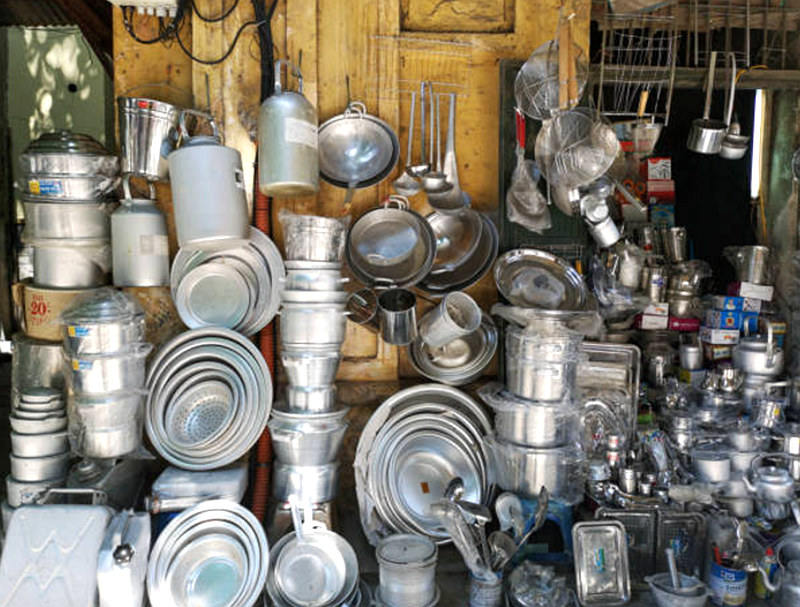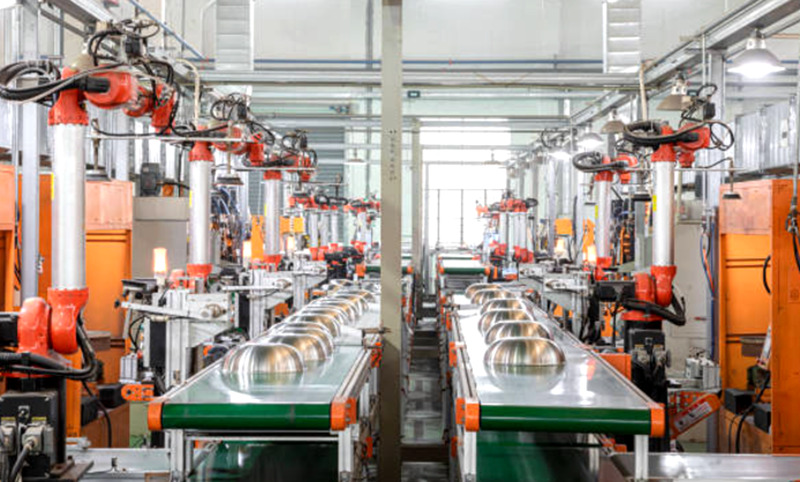How the Aluminum Pressure Die Casting Machine Works for the Aluminum Die Cast Cookware?
LK Die Casting Machine / 2024-11-28 15:02:00
Aluminum pressure die casting is widely used in manufacturing aluminum die-cast cookware, like frying pans, pots, and lids, due to its ability to produce precise, durable, and lightweight parts with excellent surface finish. Aluminum die-cast cookware has the advantages of being strong, heat-resistant, and has good thermal conductivity, which can ensure efficient cooking performance. Many of our Egyptian customers have formed an industrial chain through the production of die-cast cookware. For example, the three die-casting machines we just installed a few days ago were purchased by our Egyptian customers for their cookware production lines.

Therefore, if you are interested in the die-cast cookware business, come to contact us! We will give you the most comprehensive assistance. Here's how the aluminum pressure die-casting machine works for aluminum die-cast cookware, hoping this can help you have a general understanding:
1. Preparation of Aluminum Alloy:
Material Selection: The aluminum used for die casting is typically alloyed with other metals like silicon, copper, or magnesium to improve strength, hardness, and thermal conductivity. The choice of alloy depends on the specific requirements of the cookware.
Melting: The aluminum alloy is melted in a furnace at high temperatures (around 660°C or 1220°F). The molten aluminum is then prepared for injection into the die.
2. Die (Mold) Design:
Die Construction: The die, which is made of steel, is designed with the exact shape and features of the cookware product. It usually consists of two halves—one for the mold cavity and the other for the ejector system.
Cooling Channels: Inside the die, there are cooling channels through which coolant circulates to speed up the solidification of the molten aluminum after injection.
3. Injection Process:
Injection of Molten Aluminum: The molten aluminum alloy is injected into the die cavity under very high pressure—typically between 10,000 to 20,000 psi (pounds per square inch). This is done using a plunger system that forces the liquid metal into the die at high velocity.
High Pressure: The high pressure ensures that the molten aluminum fills every corner of the die, creating a precise and consistent shape. This is crucial for cookware, as it ensures uniformity and minimizes defects.
4. Cooling and Solidification:
Cooling: Once the molten aluminum is injected into the die, it begins to cool rapidly due to the cooling channels in the die. This rapid cooling helps the aluminum solidify and take the shape of the mold. The high pressure helps to ensure the aluminum solidifies in the die without air pockets, porosity, or other defects.
Solidification Time: The time it takes for the aluminum to solidify can vary depending on the thickness and complexity of the part, but it generally takes just a few seconds to a couple of minutes.
5. Ejection:
Opening the Die: Once the aluminum has solidified, the die halves are opened using an ejection system. The mold halves are typically separated by hydraulic or mechanical force.
Ejecting the Cast: The solidified aluminum part is then ejected from the mold. In the case of cookware, this part could be a frying pan, pot, or lid.
Ejection Pins: The ejection system may use pins or plates that push the cast part out of the die without damaging it.
6. Trimming and Finishing:
Trimming: After the casting is ejected, it may have excess material known as flash (which forms at the joints of the die halves). Flash is trimmed off using machines or manual tools.
Machining: The die-cast cookware may undergo secondary processes like CNC machining to refine its surface, create smooth edges, or add features like handles or texture.
Polishing and Coating: In the case of cookware, the parts may be polished to enhance the appearance or coated with non-stick surfaces for better performance. Some parts may also be anodized to improve corrosion resistance.
7. Quality Control:
Inspection: The final castings undergo inspection for defects such as air pockets, cracks, or dimensional inaccuracies. Castings that do not meet quality standards are either reworked or discarded.
Testing: Some cookware might undergo further testing to ensure it performs well in terms of thermal conductivity, durability, and food safety.

Advantages of Aluminum Pressure Die Casting for Cookware:
Precision and Complexity: Pressure die casting allows for the production of complex shapes and fine details, which is crucial for cookware that needs to be lightweight yet durable.
Surface Finish: The process creates smooth surfaces that may require little post-processing, which is particularly important for non-stick cookware.
Cost Efficiency: Once the mold is created, the cost of producing multiple pieces is low, making it a cost-effective process for high-volume production.
Strength and Durability: Aluminum die-cast cookware is strong, heat-resistant, and has good thermal conductivity, ensuring efficient cooking performance.
In summary, an aluminum pressure die casting machine works by injecting molten aluminum into a precisely engineered die under high pressure, allowing for the efficient production of aluminum cookware with excellent dimensional accuracy, surface finish, and durability. This process is widely used for items like frying pans, saucepans, and various other types of cookware.
If you are ready to start an aluminum die-cast cookware business, come to contact us, we will try our best to satisfy your requirements.
OTHER CONTENT
-

2024-09-19 14:16:15 LK Cold Chamber Die Casting Machine DCC900 Locking Force: 9000KN Die Height: 400-1000mm Space Between Tie Bars: 930x930mm Shot Weight: 13.5Kg Casting Area Max:2250c㎡
More -

2024-09-19 14:11:06 LK Cold Chamber Die Casting Machine DCC280 Locking Force: 2800KN Die Height: 250-650mm Space Between Tie Bars: 560x560mm Shot Weight: 2.9Kg Casting Area Max:700c㎡
More -

2024-09-19 10:23:07 LK Cold Chamber Die Casting Machine DCC580 Locking Force: 5000KN Die Heigh: 350-850mm Space Between Tie Bars: 760x760mm Shot Weight: 6.9Kg Casting Area Max:1250c㎡
More -

2024-09-19 10:11:20 LK Cold Chamber Die Casting Machine DCC400 Locking Force: 4000KN Die Height: 300-700mm Space Between Tie Bars: 669x669mm Shot Weight: 4.7Kg Casting Area Max:1000c㎡
More

